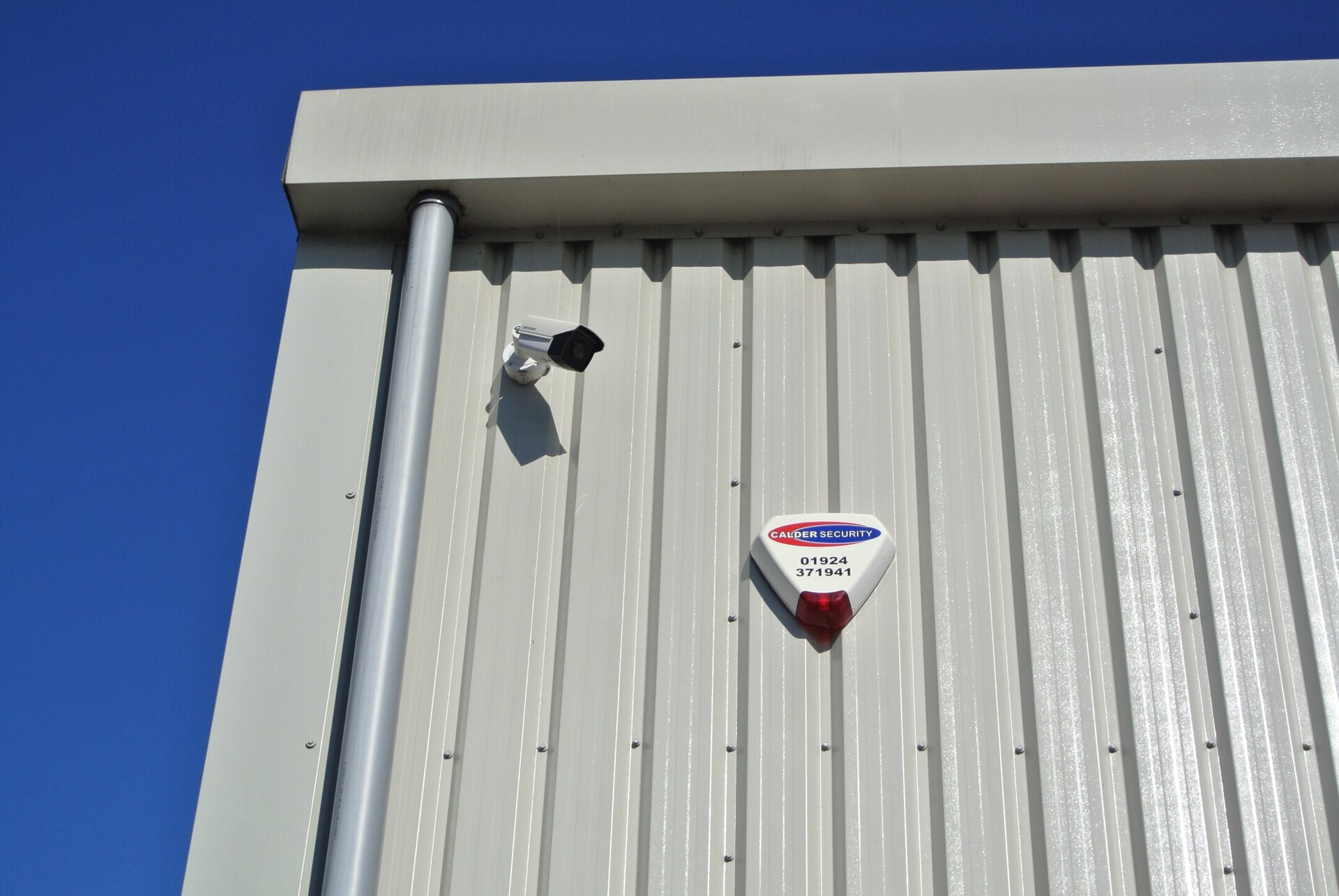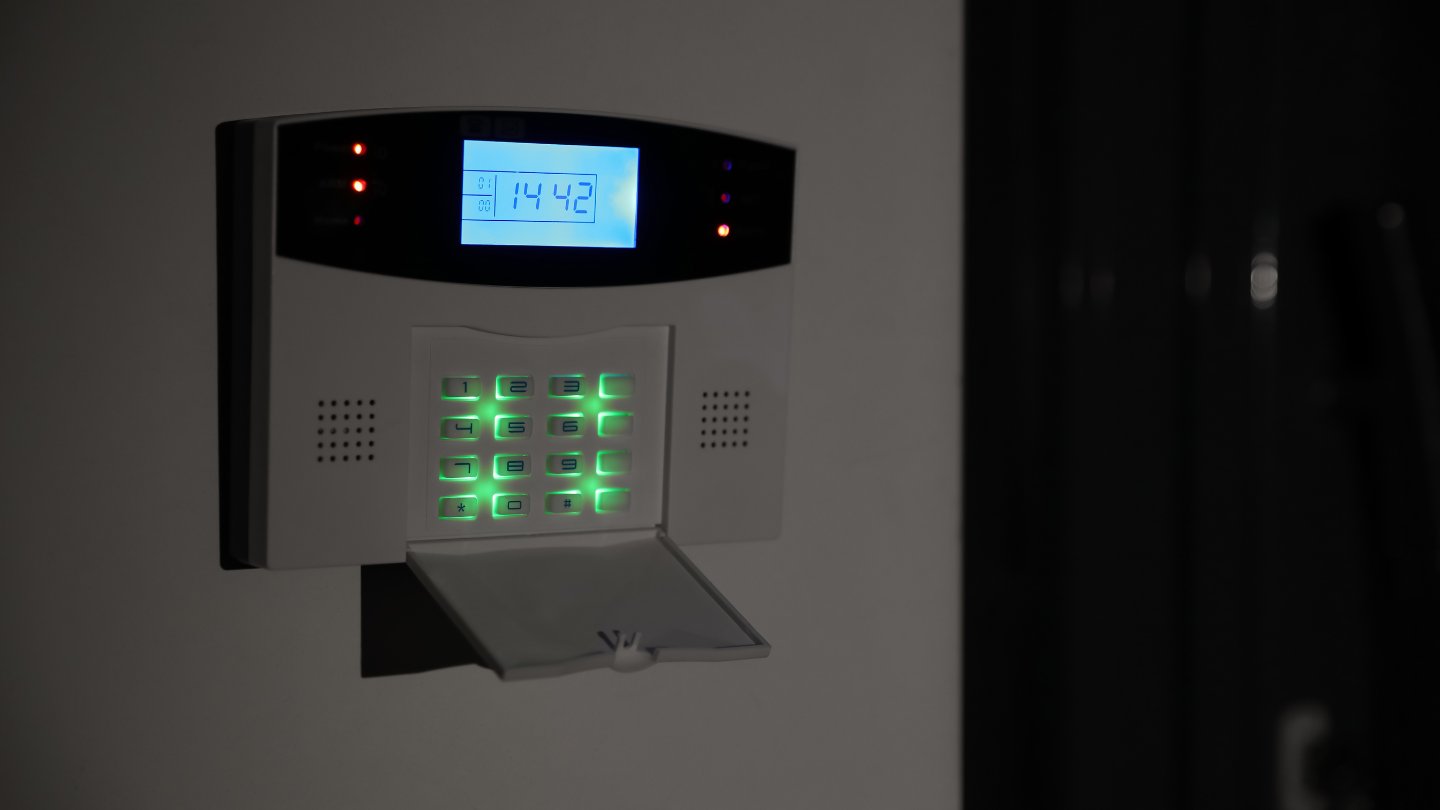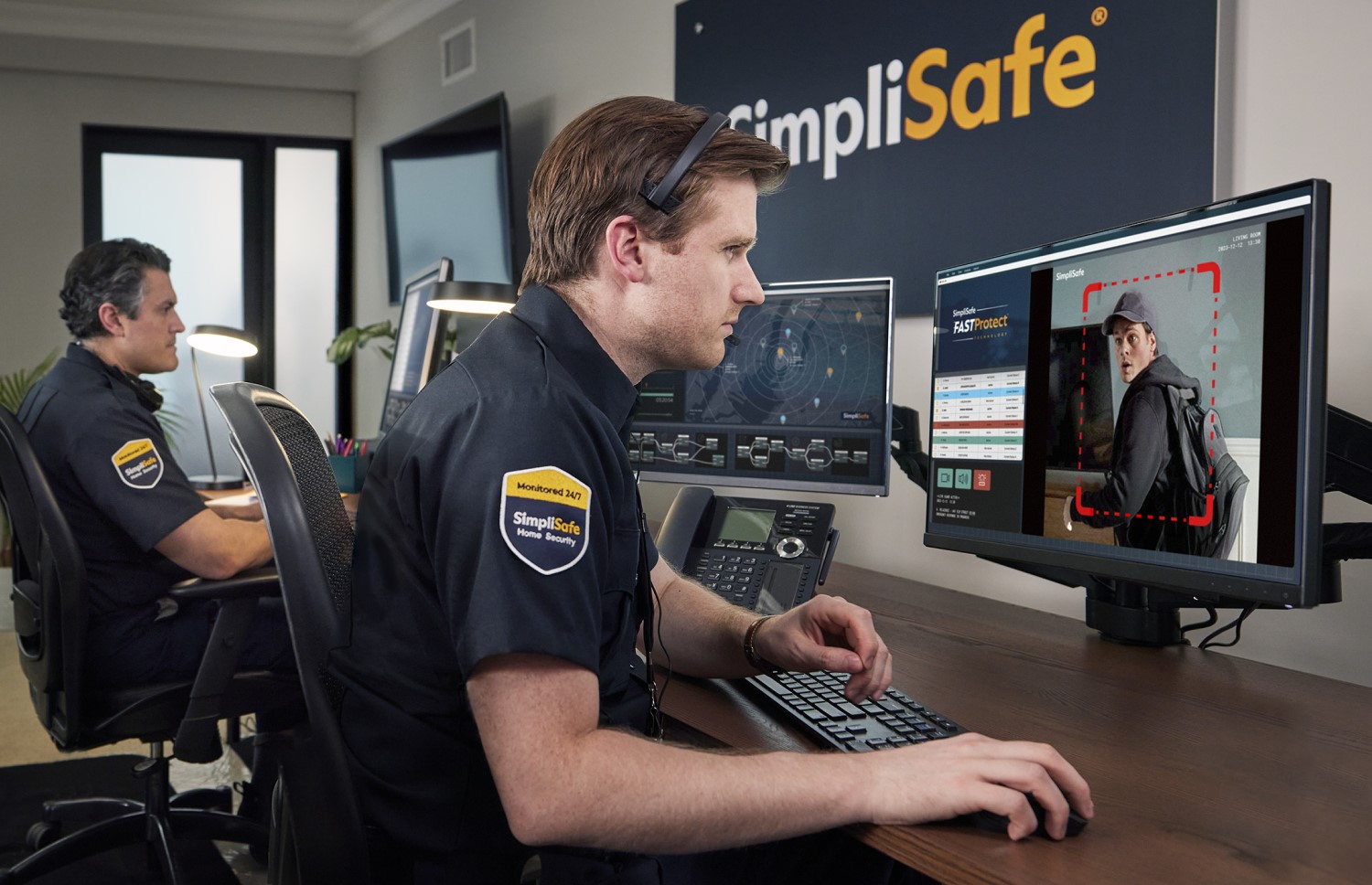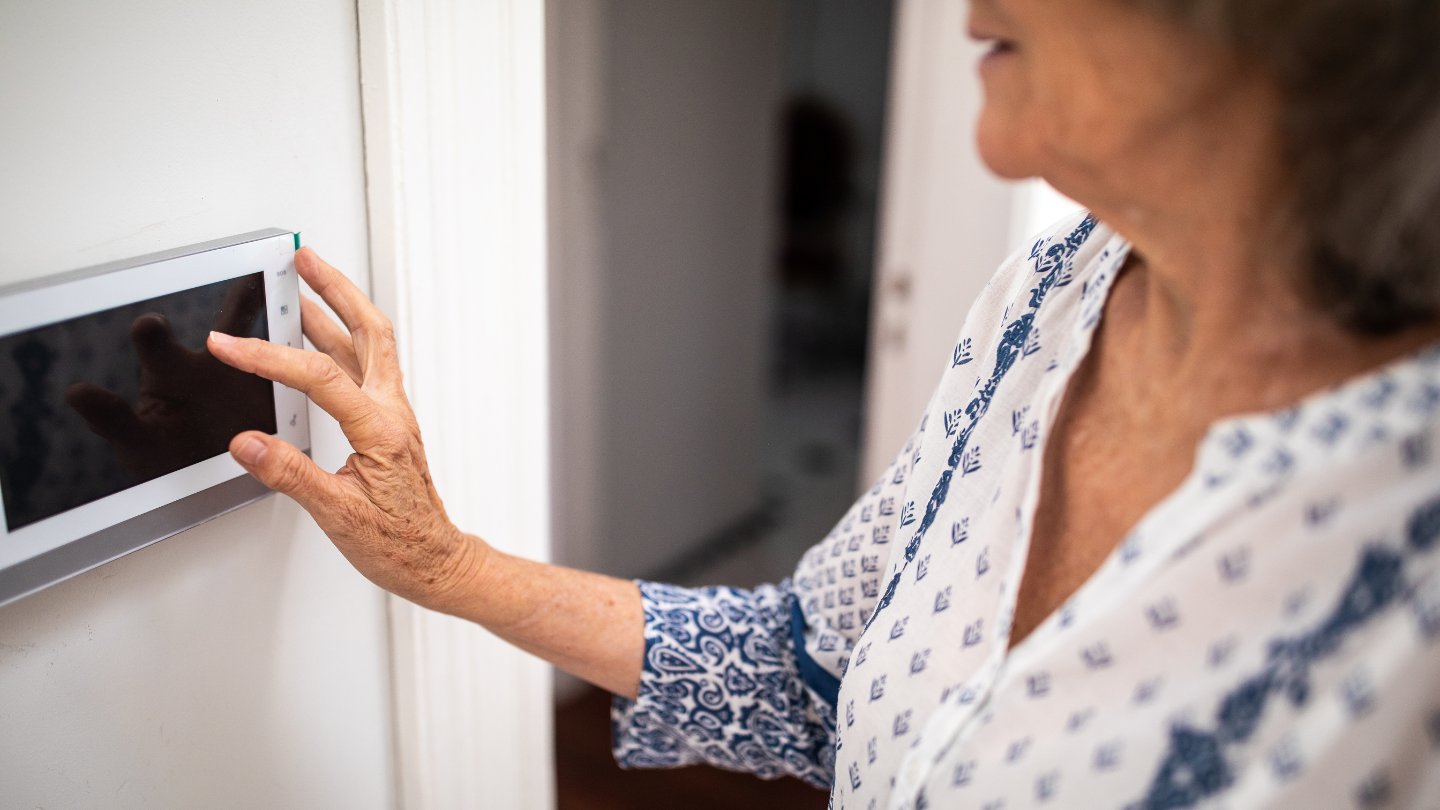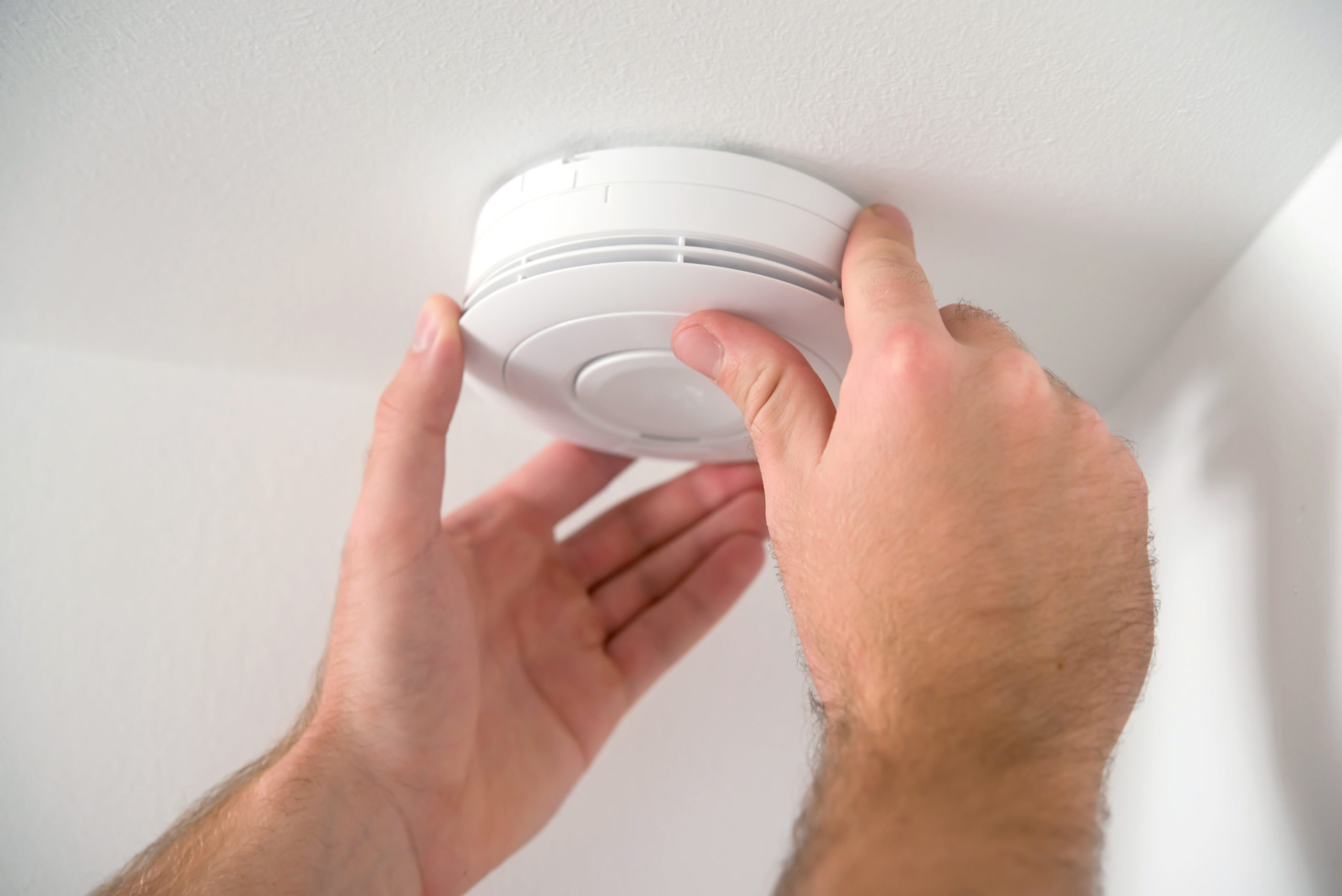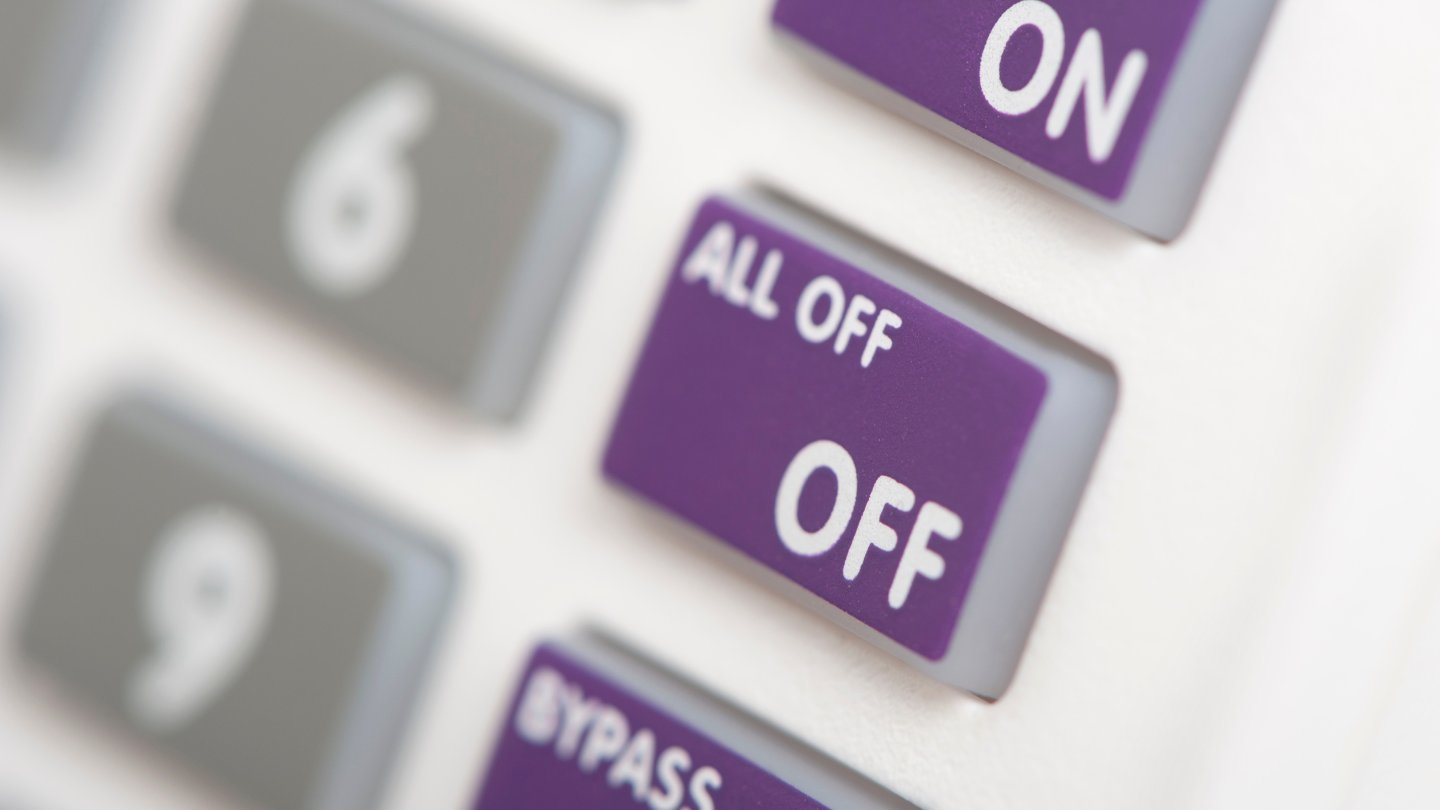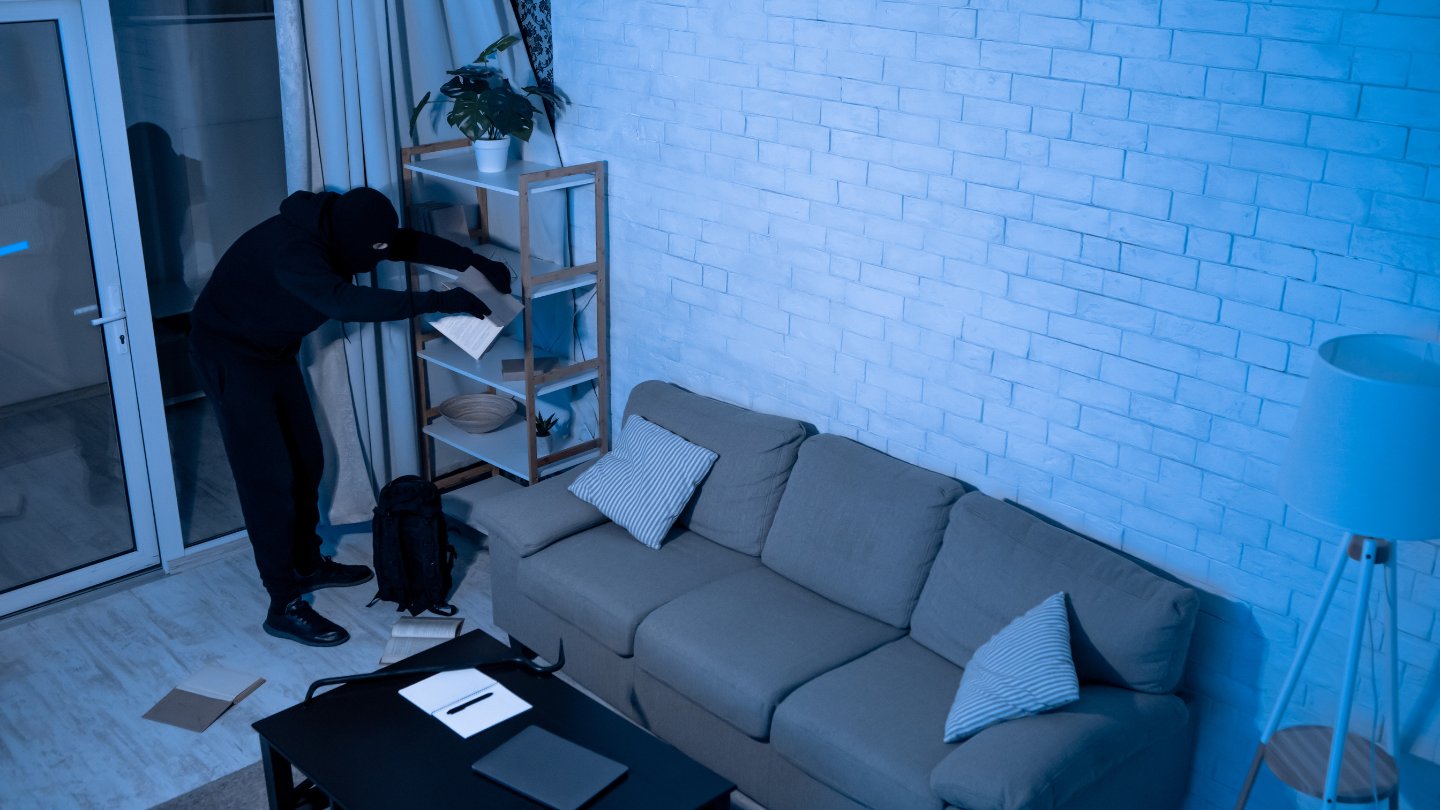Home>Home Security and Surveillance>What Do The Police Do If A Burglar Alarm Goes Off


Home Security and Surveillance
What Do The Police Do If A Burglar Alarm Goes Off
Modified: October 20, 2024
Learn what actions the police take when a burglar alarm is triggered. Enhance your home security and surveillance to keep your property safe.
(Many of the links in this article redirect to a specific reviewed product. Your purchase of these products through affiliate links helps to generate commission for Storables.com, at no extra cost. Learn more)
Introduction
Welcome to the world where technology and security intertwine to protect our homes and loved ones. In an increasingly uncertain world, it is essential to invest in reliable home security systems that can provide peace of mind and safeguard against potential threats.
One of the key elements of a comprehensive home security system is a burglar alarm. A burglar alarm is a sophisticated device designed to detect unauthorized entry into a premises and alert the occupants or external monitoring services about the breach.
In this article, we will delve into the fascinating world of burglar alarms and shed light on what happens when one is triggered. We will take a closer look at how these alarms work, the steps taken by the police, and what you can expect if your burglar alarm goes off.
So, let’s arm ourselves with knowledge and explore the realm of burglar alarms and their interaction with law enforcement agencies.
Key Takeaways:
- Burglar alarms are essential for home security, as they deter intruders, detect breaches, and alert both occupants and authorities for a rapid response, ensuring peace of mind and safety.
- When a burglar alarm goes off, police respond by investigating the situation, contacting the property owner, and addressing false alarms to ensure efficient use of resources and enhance home security.
Read more: What To Do If A Burglar Alarm Goes Off
The Purpose of Burglar Alarms
Burglar alarms serve as a crucial deterrent against burglaries, break-ins, and unauthorized access to a property. Their primary purpose is to detect and alert both the occupants and the authorities about a potential security breach. By doing so, they act as a potent line of defense in safeguarding our homes and valuables.
One of the key advantages of burglar alarms is their ability to provide an immediate response to a potential threat. Modern burglar alarm systems are equipped with advanced sensors that can detect motion, door or window breaches, glass breakages, and even changes in air pressure or temperature.
When an intrusion or breach is detected, the burglar alarm system sets off an audible alarm, often accompanied by flashing lights or sirens. This attention-grabbing response serves two purposes: to alert the occupants of a potential threat and to deter the intruder from further attempting to gain access. In many cases, the blaring siren alone is enough to scare off would-be burglars and prevent them from proceeding with any criminal activity.
Furthermore, burglar alarms are often connected to external monitoring services or directly to law enforcement agencies. This connection enables a rapid response in the event of a security breach. The monitoring service or authorities are immediately notified when the alarm is triggered, allowing them to take appropriate action and dispatch help to the location.
Aside from deterring burglars, burglar alarms can also provide homeowners with a sense of comfort and peace of mind. Knowing that their property is equipped with a robust security system can relieve anxiety and foster a feeling of safety for both the occupants and their belongings.
In summary, the purpose of burglar alarms is threefold: deterrence, detection, and rapid response. By acting as a visible deterrent, detecting breaches, and alerting both the occupants and authorities, they play a vital role in securing our homes and preserving our peace of mind.
How Burglar Alarms Work
Burglar alarms are intricate systems that employ various technologies and components to fulfill their security functions. Understanding the inner workings of these alarms can help us appreciate their effectiveness and make informed decisions when selecting the right system for our homes.
Most modern burglar alarm systems consist of the following key components:
- Sensors: These are devices that detect specific events or changes in the environment. Common types of sensors used in burglar alarms include motion sensors, door and window sensors, glass break detectors, and even seismic sensors that detect vibrations.
- Control Panel: The control panel is the central hub of the burglar alarm system. It receives signals from the sensors and determines if an alarm should be triggered. It also communicates with other components of the system and can be accessed and controlled by the homeowner through a keypad or smartphone app.
- Alarm Sounders: These components produce audible alarms when the system detects a breach. They can come in the form of sirens, bells, or even pre-recorded warning messages. The purpose of the alarm sounders is to alert both the occupants and people in the vicinity of a potential threat.
- Monitoring Services: Some burglar alarm systems are connected to external monitoring services. These services receive signals from the control panel when the alarm is triggered and can take appropriate action, such as contacting the homeowner, dispatching authorities, or both.
- Communication Channels: Burglar alarm systems often utilize various communication methods to transmit signals and alerts. This can include traditional telephone lines, internet connections, or wireless networks.
When a potential security breach occurs, the sensors in the burglar alarm system are triggered by the corresponding events or changes. For example, a motion sensor might detect movement in a specific area, or a door sensor may detect the opening of a door or window. Once these sensors are triggered, they send signals to the control panel.
The control panel then evaluates the incoming signals based on the programmed settings and rules, such as the sensitivity level and the specific areas of the property being monitored. If the control panel determines that there is indeed a breach, it activates the alarm sounders to alert the occupants and potentially scare off the intruder.
In cases where the burglar alarm system is connected to a monitoring service, the control panel also sends signals to the service. This allows the service to receive real-time notifications and take appropriate actions, such as contacting the homeowner or dispatching authorities to the location of the alarm.
Overall, the complex interaction between the sensors, control panel, alarm sounders, monitoring services, and communication channels enables the burglar alarm system to detect potential threats, provide an immediate response, and ensure that both the occupants and the appropriate authorities are alerted.
Police Response to Burglar Alarms
When a burglar alarm is triggered, the police play a vital role in responding to the potential security breach. Their swift and efficient response can make all the difference in apprehending intruders and minimizing the risk to property and occupants.
It’s important to note that police responses to burglar alarms can vary depending on the policies and procedures of the specific law enforcement agency and the jurisdiction in which the property is located. However, there are some common steps typically followed by the police when responding to burglar alarms.
Upon receiving an alarm notification, the police dispatch unit is responsible for assigning officers to investigate the alarm. The dispatch unit considers various factors, such as the level of urgency indicated by the alarm system, the availability of units, and the proximity of officers to the location.
In some cases, high-priority alarms or verified alarms from monitored systems may receive immediate attention and a faster response. These alarms typically have a higher likelihood of indicating an actual security breach, and therefore, require a more rapid intervention.
Once the police officers are dispatched, their primary objective is to assess the situation, identify any potential threats, and determine if a crime has taken place or is currently in progress. They approach the property cautiously, ensuring their safety and minimizing the risk of a confrontation with intruders.
During their investigation, the officers may conduct a visual inspection of the property’s exterior, looking for signs of forced entry, broken windows, or any suspicious activity. They may also communicate with the homeowner or any individuals present to gather additional information about the alarm and assess the situation.
If evidence of a crime or an ongoing security breach is found, the police will take the necessary actions to secure the premises and apprehend the intruders. This may involve searching the property, requesting additional backup if needed, or contacting specialized units to handle specific scenarios.
On the other hand, if the police officers do not find any evidence of a crime, they may consider the alarm to be a false alarm or triggered by non-threatening circumstances. False alarms can occur due to user error, malfunctioning equipment, or environmental factors. In such cases, the police may document the incident and inform the homeowner, reminding them of the importance of ensuring the proper functioning of their alarm system to prevent unnecessary responses.
It’s worth mentioning that the response to burglar alarms can be influenced by the occurrence of multiple false alarms at a particular property. In some jurisdictions, repeated false alarms may result in penalties or fines for the homeowners, as they can divert valuable police resources from genuine emergencies.
In summary, the police response to burglar alarms involves dispatching officers to investigate the alarm, assessing the situation, and taking appropriate actions based on their findings. Their role is crucial in ensuring the safety of the property and its occupants and apprehending potential intruders.
Steps Taken by the Police when a Burglar Alarm Goes Off
When a burglar alarm is triggered, law enforcement agencies follow specific steps to respond to the potential security breach. These steps are designed to ensure the safety of the property and its occupants, as well as to apprehend any potential intruders. While the exact procedures may vary based on jurisdiction and individual agency policies, there are some common steps typically taken by the police when a burglar alarm goes off.
1. Dispatching Officers: Once the police receive an alarm notification, the dispatch unit assigns officers to respond to the location. The urgency of the situation, available resources, and proximity of officers are factors considered when dispatching personnel.
2. Approaching the Property: Officers approach the property cautiously, taking necessary safety measures to minimize the risk of any confrontation with potential intruders. They may position themselves discreetly to observe the premises before making any contact.
3. Visual Inspection: Officers conduct a visual inspection of the property’s exterior, looking for signs of forced entry, broken windows, or any suspicious activity. This initial assessment helps determine if there are visible indications of a security breach.
4. Gaining Entry: If officers observe evidence of an ongoing security breach or suspicious activity, they may request authorization to enter the property to assess the situation further. This step is crucial in securing the premises and ensuring the safety of occupants.
5. Assessing the Situation: Once inside, officers continue their investigation, systematically checking the interior of the property. They search for signs of unauthorized entry, intruders, or any other potential threats. Officers may communicate with the homeowner or individuals present to gather more information about the alarm and assess the situation effectively.
6. Securing the Premises: If evidence of a crime or an ongoing security breach is found, officers take necessary actions to secure the premises and ensure the safety of occupants. This may involve searching the property thoroughly, requesting additional backup if needed, or contacting specialized units to handle specific scenarios.
7. Apprehending Intruders: If intruders are identified, officers work to apprehend them safely and ensure they are no longer a threat. This may involve making arrests, detaining suspects, or coordinating with other law enforcement agencies if the situation requires it.
8. Documenting the Incident: Regardless of the outcome, officers document the incident, including any evidence collected, statements from witnesses or occupants, and actions taken. This documentation is important for follow-up investigations, insurance claims, and potential legal proceedings.
9. Informing Homeowners: After conducting their investigation, officers inform the homeowner of their findings and provide any necessary guidance or recommendations for improving security measures or addressing any issues related to false alarms.
10. Follow-Up Investigations: In cases where a crime has taken place, officers may initiate a follow-up investigation to gather further evidence, interview witnesses, and potentially make additional arrests. This ensures a thorough response to the incident and helps bring the perpetrators to justice.
The steps taken by the police when a burglar alarm goes off are aimed at ensuring the safety of the property and its occupants, apprehending potential intruders, and providing peace of mind to homeowners. By following these procedures, law enforcement agencies play a critical role in maintaining security and deterring criminal activities.
If a burglar alarm goes off, the police will respond by dispatching officers to the location to investigate the situation and ensure the safety of the property. It’s important to have a reliable alarm system and to notify the police immediately if you suspect a break-in.
Dispatching Police Officers
When a burglar alarm is triggered, one of the critical steps in the police response process is the dispatching of police officers to the location. The prompt and efficient dispatching of officers is essential in ensuring a swift and appropriate response to the potential security breach. Let’s take a closer look at the process of dispatching police officers when a burglar alarm goes off.
1. Alarm Notification: The process begins when the alarm monitoring service or the homeowner’s security system notifies the police of the alarm activation. This can occur through various means, such as phone calls, email notifications, or direct communication with the police dispatch center.
2. Alarm Verification: In some cases, the alarm monitoring service or the homeowner’s security system may verify the alarm activation before notifying the police. This verification process helps reduce false alarms by confirming that the alarm is not triggered by a user error, malfunctioning equipment, or environmental factors.
3. Information Gathering: The party reporting the alarm provides important information to the police, including the address of the property, the type of alarm activation (e.g., intrusion, glass breakage), and any additional details that can assist the officers in their response.
4. Priority Assessment: The police dispatch unit assesses the priority level of the alarm based on several factors. This includes the type of alarm activation, the presence of verified alarms, and the availability of police resources. High-priority alarms indicating a confirmed security breach or a verified alarm from a monitored system typically receive a faster response.
5. Resource Allocation: Once the priority level is determined, the dispatch unit assigns available officers to respond to the alarm. The allocation of resources depends on factors such as the number of officers on duty, the proximity of officers to the location, and the urgency of the situation. The dispatch unit aims to provide a swift and appropriate response while ensuring the overall coverage of the jurisdiction.
6. Communication with Officers: The dispatch unit communicates the details of the alarm activation to the assigned officers. They provide information about the address, the type of alarm activation, and any additional relevant details that can assist the officers in their approach. Clear and concise communication is vital to ensure officers have all the necessary information to respond effectively.
7. Response Time: Officers respond to the alarm by proceeding to the location as quickly and safely as possible. Response time can vary depending on factors such as distance, traffic conditions, and the availability of officers in the vicinity. Police agencies strive to minimize response times to ensure a timely presence at the site of the alarm activation.
8. Coordination with Other Units: Depending on the situation, responding officers may coordinate with specialized units or backup personnel. This can include K-9 units, SWAT teams, or detectives specializing in burglary investigations. Coordinated efforts help ensure a comprehensive response to the security breach and enhance the safety of all involved.
Dispatching police officers effectively is crucial in maximizing the chances of apprehending intruders and minimizing potential risks to property and occupants. Through thorough communication, quick response times, and coordinated efforts, law enforcement agencies can efficiently handle alarm activations and provide a sense of security to the community.
Investigating the Alarm
When a burglar alarm is triggered, police officers are dispatched to the location to conduct a thorough investigation. The purpose of this investigation is to assess the situation, gather evidence, and determine the nature of the alarm activation. Let’s explore the steps involved in investigating a burglar alarm to ensure the safety of the property and its occupants.
1. Approaching the Property: Upon arriving at the location, officers approach the property cautiously. They assess the external surroundings, looking for any signs of forced entry, broken windows, or suspicious activity that may indicate a potential security breach.
2. Visual Inspection: Officers conduct a visual inspection of the property’s exterior to identify any visible evidence of an intrusion. This could include signs of tampering with doors or windows, damaged locks, or any other indicators that suggest unauthorized entry.
3. Gaining Entry: If officers observe clear signs of a security breach or suspicious activity, they may request authorization to enter the property. Gaining entry allows them to further assess the situation, search for intruders or potential victims, and minimize the risk to occupants by securing the premises.
4. Interior Search: Once inside, officers systematically search the interior of the property to gather information and assess the extent of the potential breach. They look for any evidence of unauthorized entry, signs of a struggle, or indications of criminal activity such as stolen items or damage to property.
5. Interviewing Witnesses: If there are any occupants or witnesses present, officers will conduct interviews to gather additional information about the alarm activation. Witnesses may provide crucial details about suspicious individuals, unusual activities, or any events leading up to or following the alarm.
6. Cross-Checking Alarm System: Officers may verify the functionality and reliability of the burglar alarm system itself. They may examine the alarm control panel, review alarm logs, and consult with the homeowner or monitoring service to ensure the alarm system is operating as intended.
7. Collecting Evidence: Officers collect any relevant evidence that may help identify the intruders or provide additional insights into the incident. This may include photographs of the scene, fingerprints, footprints, or any other physical evidence that can assist in the investigation process.
8. Coordinating with Dispatch: Throughout the investigation, officers communicate with the dispatch unit to provide updates, request additional resources if needed, or report any significant developments. This coordination helps ensure an efficient response and a well-coordinated investigation.
9. Documenting the Investigation: Officers document their findings and actions, including details of the alarm activation, observations made during the investigation, witness statements, and any evidence collected. This documentation is crucial for follow-up investigations, insurance claims, and potential legal proceedings.
10. Ensuring Property Safety: Once the investigation is complete, officers take necessary measures to secure the property and its surroundings. This may involve repairing any damage caused by the security breach or providing recommendations to the homeowner for improving security measures.
An effective and detailed investigation of the alarm activation helps to determine the cause of the alarm, identify potential intruders, and provide essential information for follow-up actions. Through their thorough investigation, police officers contribute to the safety and security of the property and its occupants.
Contacting the Property Owner
When a burglar alarm is triggered, one of the important steps taken by the police is to contact the property owner. This communication is essential to gather information, confirm the validity of the alarm, and ensure the owner’s awareness and cooperation in handling the situation. Let’s explore the process of contacting the property owner when a burglar alarm goes off.
1. Verifying Owner Contact Information: Police officers rely on the information provided by the alarm monitoring service or the security system to obtain the contact details of the property owner. This information includes the owner’s name, phone number, and the preferred method of contact, if specified.
2. Initiating the Contact: Officers reach out to the property owner using the provided contact information. They may make a phone call or, if necessary, visit an alternate address if the owner cannot be reached at the alarm location.
3. Establishing Identification: To ensure the security of the property and protect against false alarms, officers may ask the property owner to verify their identity. This can be done by confirming personal details, requesting security codes or passwords, or asking for other information that only the owner would know.
4. Relaying Alarm Information: Once contact is established, officers inform the owner about the alarm activation. They provide details such as the time of the alarm, the type of activation (e.g., intrusion, glass breakage), and any other pertinent information related to the incident. This helps the owner understand the situation and determine the appropriate course of action.
5. Gathering Additional Information: Officers may ask the owner for additional information that can assist in the investigation or provide insights into the alarm activation. This could include information about recent activities, any known security vulnerabilities, or changes in the property that might be relevant to the incident.
6. Providing Safety Guidance: Officers offer safety guidance to the property owner. This includes advising them to stay away from the property if there is a potential threat, encouraging them to take precautions, and providing recommendations on how to enhance the security measures to prevent future incidents.
7. Coordinating Owner’s Return: If the property owner is away from the premises at the time of the alarm activation, officers may assist in coordinating their safe return to assess the situation personally or make necessary arrangements for repairs or security system maintenance.
8. Explaining Follow-Up Actions: Officers inform the property owner about the follow-up actions that will be taken. This can include conducting a thorough investigation, documenting the incident, providing any necessary documentation for insurance purposes, and coordinating with other agencies if required.
9. Addressing Concerns and Answering Queries: Officers answer any questions or concerns the property owner may have regarding the alarm activation, police response, or security measures. They provide reassurance and ensure that the owner feels supported throughout the process.
10. Encouraging Communication: Officers emphasize the importance of maintaining open lines of communication with the police department and the alarm monitoring service. They encourage the property owner to report any suspicious activities, update contact information if necessary, and notify the authorities of any changes that may impact the security system.
Contacting the property owner serves as a crucial step in the response to a burglar alarm activation. Effective communication helps gather information, provide guidance, and ensure a coordinated effort to safeguard the property and its occupants. Through this contact, police officers work together with the property owner to address the situation and prevent future incidents.
Dealing with False Alarms
False alarms can occur in burglar alarm systems for various reasons, such as user error, malfunctioning equipment, or environmental factors. While false alarms can be a nuisance and potentially divert valuable police resources, they are also an opportunity for homeowners and law enforcement to improve alarm system performance and prevent unnecessary responses. Let’s explore how false alarms are dealt with and the measures taken to minimize their occurrence.
1. Notification of False Alarm: When the police respond to a burglar alarm activation and determine it to be a false alarm, they make contact with the property owner to inform them of the situation. This notification may happen in person, through a phone call, or via other means of communication provided by the alarm monitoring service.
2. Verification Process: Officers may conduct a verification process to confirm whether the alarm activation was indeed a false alarm. This can involve checking the alarm system logs, reviewing video footage (if available), or gathering information from witnesses or occupants about the circumstances leading up to the alarm activation.
3. Educating the Property Owner: Officers use false alarms as an opportunity to educate the property owner about the potential causes and ways to prevent them in the future. They provide guidance on the proper use of the alarm system, ensuring that all users are familiar with its operation, and reminding them of any relevant regulations or local ordinances related to false alarms.
4. System Maintenance and Upgrades: If the false alarm is determined to be a result of malfunctioning equipment, officers may recommend that the property owner schedule maintenance or repairs with a reputable alarm service provider. They may also suggest upgrading the system to newer technology that is more reliable and less prone to false alarms.
5. User Training: To minimize the occurrence of false alarms due to user error, officers may provide training to the property owner and users of the alarm system. This training could include instructions on preparing the system for arming, proper alarm code entry, and understanding how system components, such as motion sensors or door/window contacts, work.
6. Penalties/Fines: In some jurisdictions, repeated false alarms may incur penalties or fines. These penalties are intended to discourage careless or avoidable false alarms and ensure that police resources are allocated to genuine emergencies. Property owners are typically notified about the consequences of false alarms and are encouraged to take necessary measures to prevent them.
7. Alarm System Updates and Enhancements: Alarm service providers constantly work to improve their technology to reduce false alarms. This may involve refining sensor capabilities, adjusting alarm trigger settings, implementing additional verification methods, or integrating artificial intelligence to better distinguish between genuine threats and false activations.
8. Community Education: Law enforcement agencies often conduct community outreach programs to raise awareness about false alarms. These programs aim to educate homeowners about the causes and prevention of false alarms, emphasizing the importance of proper alarm system usage and maintenance.
By addressing false alarms proactively and collaboratively, homeowners and law enforcement agencies can work together to reduce their occurrence and ensure that resources are efficiently allocated to genuine emergencies. Through training, education, system maintenance, and technological advancements, the goal is to achieve the optimal balance between providing effective security and minimizing false alarms.
Conclusion
When it comes to protecting our homes and loved ones, burglar alarms play a crucial role in deterring potential threats and providing peace of mind. These sophisticated systems are designed to detect unauthorized access, trigger alarms, and alert both occupants and law enforcement agencies in the event of a security breach.
In this article, we have explored the purpose and functionality of burglar alarms, delving into how they work, the response of the police when an alarm goes off, and the steps taken to investigate and address the situation. From dispatching police officers to contacting the property owner and dealing with false alarms, it is evident that a well-coordinated effort is required for the effective functioning of a burglar alarm system.
By understanding the inner workings of burglar alarms, homeowners can make informed decisions when selecting a system that suits their needs. They can ensure proper installation, maintenance, and user training, which are essential in reducing the occurrence of false alarms and maximizing the system’s reliability.
The cooperation between homeowners and law enforcement agencies is vital in creating a safe and secure environment. Homeowners should promptly update their contact information and communicate any changes to the alarm system or property that may impact its security. This enables law enforcement to respond efficiently and provide appropriate support.
Moreover, it is crucial to address false alarms effectively. By educating homeowners, encouraging proper use of alarm systems, and implementing measures to prevent false activations, resources can be allocated more efficiently, ensuring that genuine emergencies receive the attention they require.
In conclusion, burglar alarm systems are crucial components of home security, acting as a visible deterrent, detecting potential breaches, and facilitating a rapid response from law enforcement. By understanding their purpose, how they work, and the steps taken by the police when an alarm goes off, homeowners can make informed decisions, enhance their security, and contribute to a safer community.
Remember, investing in a reliable burglar alarm system is an investment in peace of mind and the protection of what matters most – our homes and loved ones.
Frequently Asked Questions about What Do The Police Do If A Burglar Alarm Goes Off
Was this page helpful?
At Storables.com, we guarantee accurate and reliable information. Our content, validated by Expert Board Contributors, is crafted following stringent Editorial Policies. We're committed to providing you with well-researched, expert-backed insights for all your informational needs.

